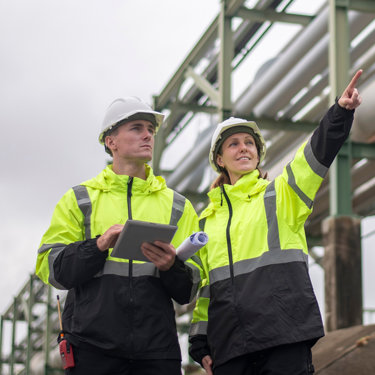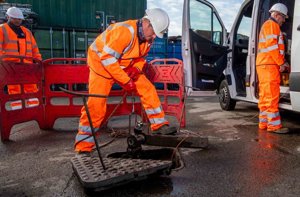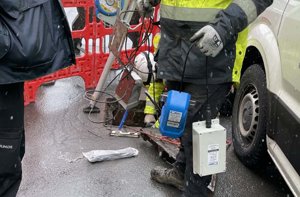
Drain surveys
Ready to discuss your project?
Please leave your details and a member of our team will reach out to discuss your requirements in more detail and arrange next steps.
We provide a range of sewer and drain surveys and drainage plans for water companies, housebuilders, commercial sites, and domestic customers to help them understand and manage the condition and layout of their drainage network.
Our surveys confirm the location of sewer and drainage pipes, monitor their condition, and identify blockages, such as infiltration, tree root ingress, misconnections, or structural defects, and advise on remedial action or planned preventive maintenance.
Visit Group companies Jet Aire, Oneline, or Public Sewer Services to learn more.
Features and outputs
- Our camera equipment can survey pipes from 40mm upwards.
- 500 metre surveying capability with one set up.
- OS19X-qualified team and advanced equipment allow us to work on private and public sewers, including in confined spaces.
- Every customer receives a WinCan report, AutoCAD site drawing and a list of immediate and recommended actions to take.
- Ability to work on domestic drainage issues as well as public networks.
Added value
Quality
Equipment
Training
Compliance
Efficiency
Survey types
We carry out both proactive and reactive surveys on pipes and manholes for a range of purposes from site investigations to sewer and drainage adoption.
Site investigation surveys
We plot the size and location of pipes, access points, manholes and interceptors and provide a full drainage plan to support building work, and to understand network capacity and where existing sewers lie.
Drainage plans
Our comprehensive drainage plans log details of the drainage network on a particular site, including pipes, manholes, interceptors, and surface water drainage.
Impermeable area studies
Our impermeable area studies identify where rainwater and surface runoff are entering the drainage system.
Connectivity surveys
Where pipe condition is either already known or not required, we can use probes and dye testing to understand how pipes connect and check the flow levels.
Build over surveys
We use CCTV to check the location, structural integrity, and flow of pipes prior to building work taking place so a build-over agreement can be put in place if needed.
As built surveys
Sewer and drain adoption surveys
To prove compliance with section 102, 104 & 185 agreements we survey new sewers and drains ensuring they are properly installed and free from defects, prior to their adoption into the public sewer network.
Highway adoption surveys
To ensure compliance with Section 38, 228 & 278 agreements our As Built Surveys for highway adoption are coloured to the local authority standard, and supported by land transfer plans, highway inventories and asset specification inventories.
Pipework condition surveys
We use CCTV to proactively check the condition of pipework and detect problems such as infiltration, root ingress and other structural defects before they cause significant issues.
Decommissioning
We use CCTV to check the status of old or unknown water or gas pipes, so they can be safely removed.
Techniques
We use a range of different surveying techniques including CCTV, sonar tracing, and dye testing.
CCTV surveys
Our camera equipment can survey pipes from 40mm upwards, allowing us to assess condition and structural integrity and diagnose blockages or other issues along the whole network, from internal pipework to public sewers.
Manhole surveys
Manhole surveys can be carried out to fill gaps in records, obtain data on critical sewers, address specific issues, or check on general condition.
Sonar tracing
Our specialist sonar tracing equipment detects the exact location of any defective or collapsed drains identified as part of the CCTV survey. Sonar tracing is also used to accurately locate and mark out the drainage prior to building work.
Dye testing
Dye testing detects the flow of water through drains or pipes. It can be used to identify individual flows into a common drain and trace where foul water is entering rivers or streams.
Odour investigation
Where bad smells are causing problems, we will use a combination of mini camera systems and smoke bombs to check pipework for cracks, gaps, or other possible points of entry.
Hydraulic pressure testing
Hydraulic pressure testing is a way of detecting leaks in underground pipes. Air is pumped into the drain or pipe and if the pressure holds, the line is sound. If the pressure drops, we investigate further and recommend remedial action.
You might also be interested in...
Environmental compliance today, creating a sustainable tomorrow
Helping you reduce risk to the environment and your operation by managing assets compliantly while achieving commercial, ESG, and net-zero goals.
Contact our experts



